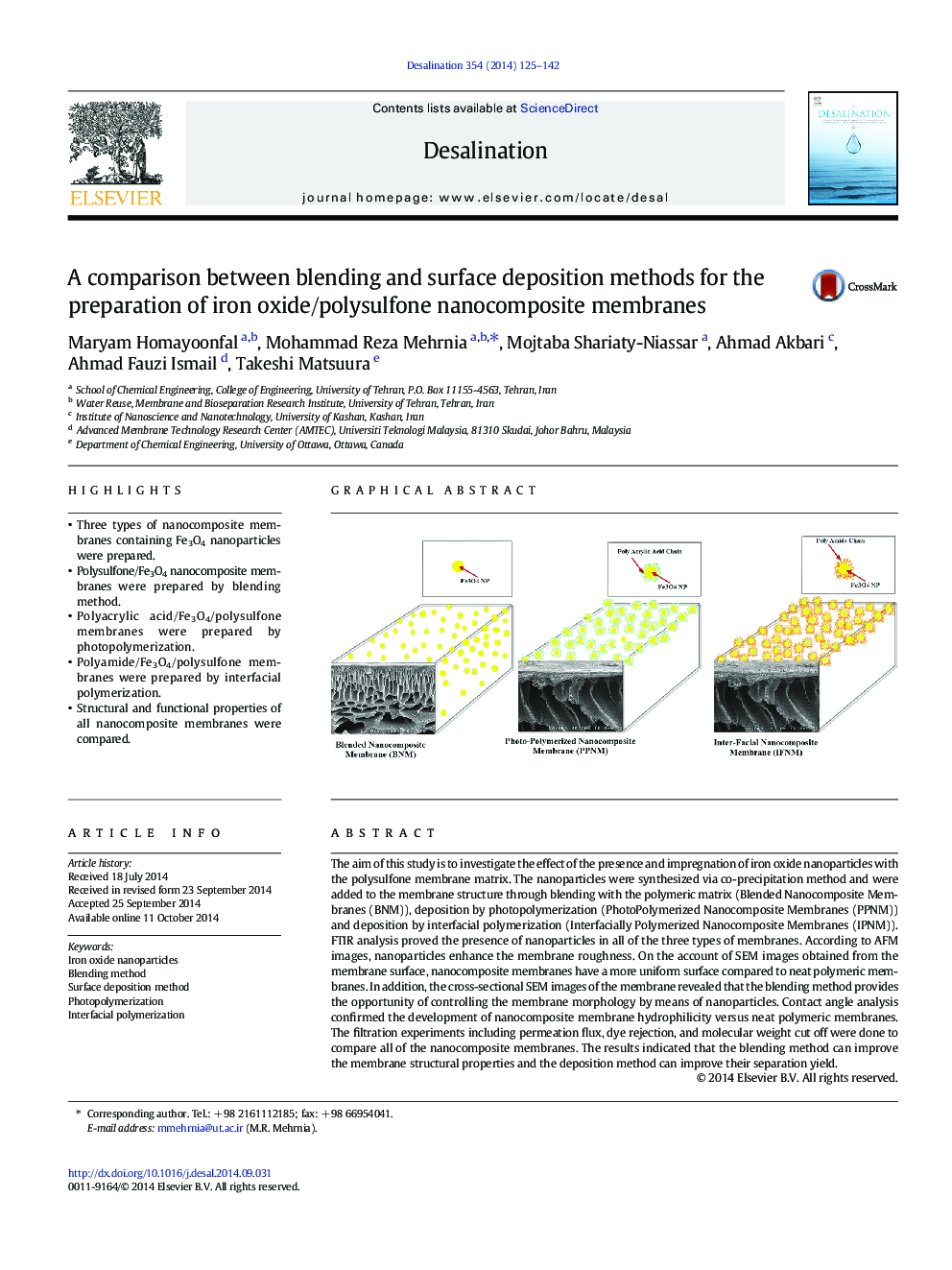| کد مقاله | کد نشریه | سال انتشار | مقاله انگلیسی | نسخه تمام متن |
|---|---|---|---|---|
| 623394 | 1455341 | 2014 | 18 صفحه PDF | دانلود رایگان |
• Three types of nanocomposite membranes containing Fe3O4 nanoparticles were prepared.
• Polysulfone/Fe3O4 nanocomposite membranes were prepared by blending method.
• Polyacrylic acid/Fe3O4/polysulfone membranes were prepared by photopolymerization.
• Polyamide/Fe3O4/polysulfone membranes were prepared by interfacial polymerization.
• Structural and functional properties of all nanocomposite membranes were compared.
The aim of this study is to investigate the effect of the presence and impregnation of iron oxide nanoparticles with the polysulfone membrane matrix. The nanoparticles were synthesized via co-precipitation method and were added to the membrane structure through blending with the polymeric matrix (Blended Nanocomposite Membranes (BNM)), deposition by photopolymerization (PhotoPolymerized Nanocomposite Membranes (PPNM)) and deposition by interfacial polymerization (Interfacially Polymerized Nanocomposite Membranes (IPNM)). FTIR analysis proved the presence of nanoparticles in all of the three types of membranes. According to AFM images, nanoparticles enhance the membrane roughness. On the account of SEM images obtained from the membrane surface, nanocomposite membranes have a more uniform surface compared to neat polymeric membranes. In addition, the cross-sectional SEM images of the membrane revealed that the blending method provides the opportunity of controlling the membrane morphology by means of nanoparticles. Contact angle analysis confirmed the development of nanocomposite membrane hydrophilicity versus neat polymeric membranes. The filtration experiments including permeation flux, dye rejection, and molecular weight cut off were done to compare all of the nanocomposite membranes. The results indicated that the blending method can improve the membrane structural properties and the deposition method can improve their separation yield.
Figure optionsDownload as PowerPoint slide
Journal: Desalination - Volume 354, 1 December 2014, Pages 125–142
